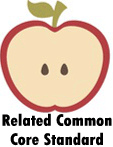How to Use Transitions Words To Show Relationships
What Are Transition Words Used For?
Transition words are used to indicate a relation between phrases, clauses, sentences, and even paragraphs. By the help of transition words, it is easy for the reader to understand the way different ideas are related to each other. Some commonly used transition words are above all, shortly, in the end, to conclude, moreover, however, unlike, despite, etc. It is very important to use transition words correctly. Given below are some main uses of transition words:
Transition Words Used for Emphasizing
Some authors use transition words to give importance to ideas, facts and other important information. To emphasize the important part of the content, one can use transition words like above all, most importantly, absolutely and many other such words.
Transition Words Used for Comparing
One of the most important uses of transition words is comparing two or more ideas. Transition words including, however, nevertheless, contrary, nonetheless are used for comparing.
Transition Words Used for Concluding
Transition words like to conclude, in the end, to sum up, briefly, etc. help writers to conclude their piece of writing effectively and attractively.
Transition Words Used for Sequencing
When information is listed one after the other, transition words are used to sequence them in order. Transition words used for this purpose are: firstly, secondly, first of all, before, and some similar words.
Transition Words Used for Conditioning
Some transition words are used to indicate some specific case or situation. For example: for, in this case, unless, etc. are used to indicate conditions.
Transition Words Used for Addition
Transition words also are used to add new information about the topic. In addition to, additionally, so, moreover, furthermore, etc. help to introduce new information and to relate it with the previous one.
Here are a few ways to use transition words to show relationships.
To Add Information
Transitions words help a lot in adding information to the sentences. Words like moreover, in addition to, besides, also, etc. help in adding information to create relationships.
For example,
Chris plays a lot of soccer. In addition to that, he is also on the basketball team.
The little boy had shorts and a t-shirt on.
I enjoy the new show on television because it focuses on the social issues. Besides that, the lead actor is a friend of mine.
To Show Conclusion
Transition words are also used to show a conclusion. Transition words that are used to show conclusion are in the end, finally, to sum up, in conclusion, in brief, to conclude, thus, etc.
For example,
To conclude, I wish you and your family a very warm welcome to our neighborhood.
We waited at the station for hours, Finally, our guests arrived.
To Show Comparison
Transition words help in creating a link or connection between two entities. Words that show comparison are as in, like, similarly, by comparison, likewise, as if, in comparison to, etc.
For example,
She wore the dress just like her mother.
The cat acts as if she rules the house.
Josh loves to party. In comparison, Ashley likes to spend time at home.
To Show Differences
Transition words also help to differentiate between two things in a sentence. Words that show differences in a sentence are unlike, however, rather than, nevertheless, though, in spite of, but, yet, in contrast to, etc. For example,
She likes to work out at home rather than at the gym.
The theatre play was amazing, nonetheless, I got bored watching it for the third time.
She likes to eat chocolate, unlike her brother.
To Show Relationship With Time
Transition words are used to show the relationship with time with the help of words like before, after, in the beginning, earlier, next, eventually, etc.
For example,
Eventually, he gave his resignation.
The next storm was harder to bear.

